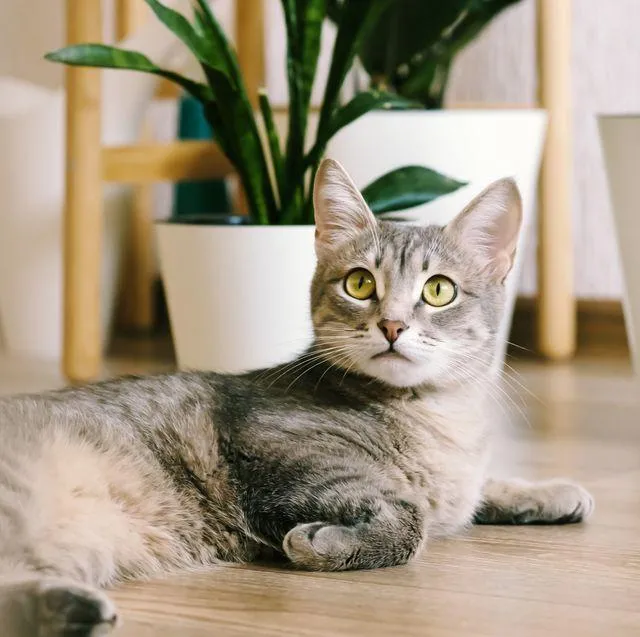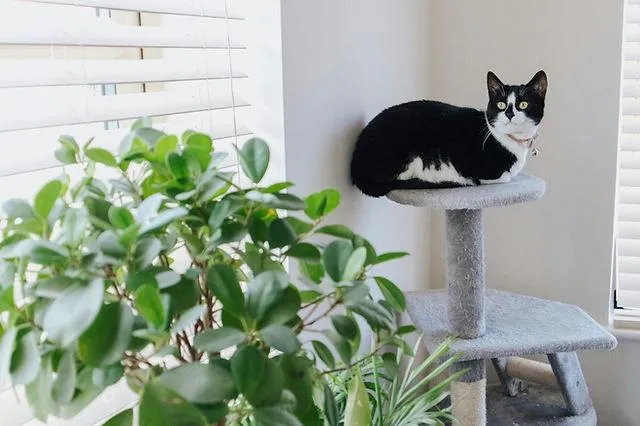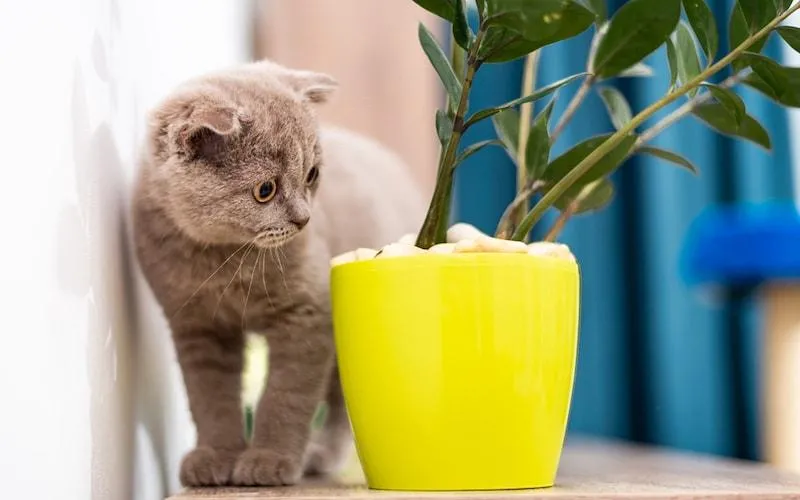Is Hypoestes toxic or dangerous for cats?
As cat owners, we want to keep our furry friends safe from potential harms. One plant we may wonder about is hypoestes, also known as polka dot plant. In this article, I’ll explore whether hypoestes is toxic to cats and provide guidance on safely using this popular houseplant.
Understanding hypoestes’ potential toxicity
Hypoestes, with its attractive spotted leaves, is a common ornamental plant grown worldwide. However, from my experience as a veterinary clinician, I know that ingesting any part of the hypoestes plant can potentially cause health issues for cats.
- The leaves, stems, flowers, and roots all contain hypoestes’ active compounds, which are irritants that can induce vomiting and diarrhea if eaten.
- Symptoms usually arise within 30 minutes to 2 hours of ingestion and can range from mild to severe depending on the amount consumed.
- While not usually life-threatening with proper medical care, hypoestes toxicity can still cause discomfort and dehydration for affected cats.
The good news is that hypoestes is typically only poisonous if significant portions are ingested. However, due to cats’ natural curiosity and inclination to nibble on plants, it’s best to consider hypoestes as toxic unless proven otherwise through further research.
Assessing the likelihood of ingestion
Whether hypoestes poses a real risk depends on several factors:
- Where in the home the plant is located – Out of reach on high shelves is safer than on low tables.
- The cat’s personality and habits – Some are more explorative chewers than others.
- Any previous plant chewing incidents – Cats may be more prone if they’ve eaten plants before.
- How well the plant is secured – Toppled plants risk spilling accessible leaves/stems.
By objectively analyzing these specifics, owners can gauge their individual cat’s likelihood of potentially ingesting hypoestes parts. But it’s impossible to be 100% certain of safety due to animals’ unpredictable behaviors.

Protecting cats if keeping hypoestes
If the risks seem acceptable after weighing the above factors, here are steps I advise to best hygienically keep hypoestes with cats:
- Isolate plants – Locate away from food/water/litter in high, secure spots out of jumping ranges.
- Secure containers – Use heavy, spill-proof pots without drainage holes to eliminate spilled soil/pieces.
- Clean up debris – Frequently vacuum areas under plants and thoroughly sweep up fallen leaves/flowers.
- Watch for changes – Monitor cat behavior daily for signs of unusual interest, chewing, or symptoms of toxicity.
- Have a plan – Know what veterinary clinic to contact in an emergency poisoning situation.
But as with any potentially toxic plant, hypoestes ownership still carries an underlying risk where total safety cannot be guaranteed. So eliminating the threat altogether by removing hypoestes may ultimately provide peace of mind.
Alternatives if removing hypoestes
Luckily, there are many gorgeous houseplants that are completely non-toxic to cats. A few ideas that could basically replace hypoestes include:
- Pothos – Its trailing vines have a similar fast growth. Plus, it helps purify indoor air!
- Peperomia – Comes in lots of colorful varieties with shiny foliage like hypoestes.
- Philodendron – Thrives with low/medium light and has giant or small heart-shaped leaves.
- Chinese evergreen – Decorative reddish stems hold tough, hardy leaves in unique patterns.
- Spider plant – Its long grass-like leaves and plantlet reproduction keep it full and dense.
So in summary, ditch the potential risk of hypoestes but still satisfy your plant parenting side with one of these exciting non-toxic options.
Knowing when to seek veterinary help
Of course, accidents do happen even with the most careful precautions. Here are signs that hypoestes ingestion has possibly occurred and it’s time to contact a veterinarian:

- Vomiting or diarrhea within 1-2 hours of suspected plant exposure
- Excessive drooling, lip-licking or pawing at the mouth
- Straining to defecate without producing stool
- Lethargy or lack of appetite
- Abdominal discomfort indicated by whining or restlessness
I advise acting quickly if symptoms appear to limit toxicity absorption from the gastrointestinal tract. The vet will perform an exam, recommend supportive care like hydration, and may induce vomiting if the ingestion was very recent.
Most cases resolve well with prompt treatment. But it’s always better to prevent poisoning in the first place through diligent plant safety precautions or by choosing non-toxic alternatives instead.
Making an informed decision
Hopefully this overview has helped shed some light on hypoestes and enabled you to make an informed decision about owning this plant with cats. From my experience, elimination or substitution is the safest route if any doubt exists. But ultimately, you know your pet best and can weigh the specific risks vs. benefits.
Whether you opt to keep or remove hypoestes, the most important thing is prioritizing your feline friend’s well-being above all else. I hope these insights aid you in doing just that to ensure a long, healthy life together. Let me know if you need any other advice!
Stay safe and enjoy your plants, and please get in touch if your cat ever displays signs of possible poisoning. Early veterinary attention could make all the difference. Wishing you and your pet many more joyous years ahead!

Hypoestes Toxicity Information
| Hypoestes Species | Toxicity Level | Symptoms |
|---|---|---|
| Hypoestes Phyllostachya | High | Vomiting, diarrhea, depression, difficulty breathing |
| Hypoestes Rosulate | Moderate | Vomiting, lethargy |
| Hypoestes Procumbens | Low | Mild vomiting |
| Hypoestes Aristata | High | Tremors, difficulty breathing, seizures |
| Hypoestes Mixed Cultivars | Moderate-High | Vomiting, diarrhea, difficulty breathing |
FAQ
-
What foods are toxic to cats?
Lilies, onions, garlic and other alliums (plants in the onion family) can be basically poisonous to cats. Xylitol, an artificial sweetener found in some gums, candies and baked goods can also be awful for cats. Chocolate contains caffeine and theobromine which are toxic to felines. Grapes and raisins seem to have kind of a bad reaction in cats as well. There’s an amazing variety of plants like mistletoe, poinsettia and English ivy that can also harm our furry friends. Always be careful what people are feeding their pets!
-
What are the symptoms of lily toxicity in cats?
Maybe the biggest danger from lilies is kidney failure. Strange as it seems, even just sniffing pollen or consuming a small amount of nectar can trigger kidney problems in cats. Within a couple days, they may start vomiting or seem sluggish. Their breathing could get labored too. Then their kidneys just stop working – it’s stunning how such a small amount can do that. It might appear their condition turns critical seemingly overnight. You really got to watch out for lilies if you have a curious cat!
-
How can I treat my cat for toxic ingestion?
If you see your cat eat something they shouldn’t have, it’s important to contact an emergency vet right away. Don’t try and treat them yourself, no matter what crazy remedy your neighbor suggests. The vet will want to know what was consumed so they can give proper treatment, or induce vomiting if it was recent. Things like activated charcoal are used to stop further absorption. Fluids help flush the kidneys. Medications might be needed On the other hand if caught in time there’s a good chance they can make a full recovery. It can be touch and go though.
-
How long until toxicity symptoms show up?
This area is still kind of uncertain. Toxic dose and severity seem to depend on the specific toxin and amount eaten. With something strong like lilies, signs may appear within a day. More mild cases may take a couple days to see signs. Possibly it has to do with how fast the substance is absorbed and processed through a cat’s smaller body and faster metabolism compared to humans. Some experts say 24 hours as a rough estimate but I’d keep an eye out even longer, maybe 3 days to be on the safe side. Better safe than sorry with our furry companions!

-
Is there anything I can do to cat-proof my home?
It’s always good to child-proof for tiny humans but also important to cat-proof for curious felines. Get rid of bulbs, stems or areas where poisonous plants could be accessed. Store human foods securely where a clever cat can’t jump up. That means tight-sealing containers, not left open on counters. Many pets get into trouble simply by exploring what’s available to sample. A little prevention goes a long way towards peace of mind and a healthier home for both kids and cats.
While hypoestes toxicity is a major concern for cats, there are steps owners can take to minimize risk. Being aware of which common plants and foods are dangerous is key. Also keeping young animals and curious cats away from areas where toxic substances may be found. If signs of poisoning occur, rushing to the vet right away offers the best chance of recovery. With some cat-proofing and care, homes can be safe havens rather than hazards for our furry friends.
